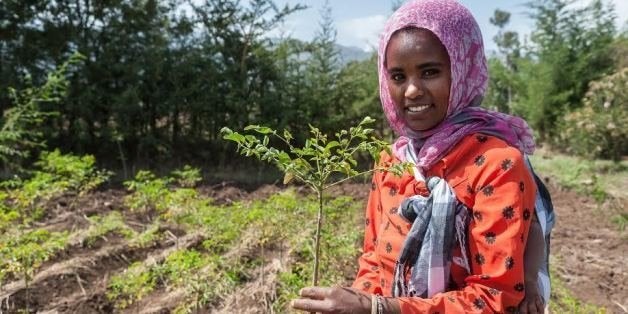
World Hunger Day is May 28. Let's talk about ending hunger for good.
On May 28, groups around the world will come together to honor World Hunger Day, a day that aims to raise awareness about the 795 million people who live in chronic hunger worldwide. It is also a day to foster a dialogue on sustainable solutions to ending hunger.
Hunger and malnutrition are the greatest risks to health worldwide -- hunger kills more than AIDS, malaria and tuberculosis combined. And though we may hear about famine or emergencies most often in the news, the vast majority of those living in hunger are suffering from chronic, persistent hunger -- the silent, invisible, day-after-day condition of abject poverty.
Chronic hunger persists when people lack the opportunity to earn enough income, to receive an education, to gain skills, to meet basic health needs and to have a voice in the decisions that affect their community. This lack of opportunity perpetuates poverty and the cycle of malnutrition, especially among girls and women.
The cycle of malnutrition starts like this: as a baby girl born into poverty, she might be abandoned and left to die through the practice of female infanticide. During her childhood, she will likely be fed last and least -- after her father and brothers.
As an adolescent she may be married off at a young age so her family can get a dowry. She may be forced to drop out of school because she becomes pregnant, or because of other simple factors. Often, girls do not attend school because of a lack of decent sanitation facilities or the need to spend hours each day collecting water.
At working age, she does not have the same job opportunities and receives less pay for the same work -- even when she works longer hours. Over her lifetime, she may suffer violence and neglect. At child-bearing age, she could die from childbirth. Every day, nearly 830 women die from preventable causes related to pregnancy and childbirth.
Because she is married off as a teen, she becomes pregnant before being fully developed and is undernourished while she carries her baby. She therefore gives birth to an undernourished baby. That undernutrition has an irreversible effect on her child's IQ, ability to fight off disease and prospects for economic advancement. And the cycle continues.
Yet, there is a flip side to this story. Better nutrition improves infant, child and maternal health, supports stronger immune systems, and allows for safer pregnancy and childbirth. People with adequate nutrition are more productive and can create opportunities to break this cycle of poverty and hunger. Experts agree that tackling malnutrition is not only the right thing to do, but it also makes economic sense. Every dollar spent on childhood nutrition can save up to $166.
And we've made enormous progress. World hunger has declined by more than 219 million people since 1990-92, and many countries have greatly reduced or eliminated hunger in just 25 years. We know what needs to be done.
So what can we do reduce hunger and malnutrition?
- We need to focus on bottom-up solutions that partner with communities who, with the right tools and training, lead the charge. Fostering a culture of self-determination and economic viability -- in which the community itself is the driver of continued change -- is the key to sustainably ending hunger.
When we focus on people, when we work together, when we let communities lead, we can sustainably end hunger, for good.
To learn more about World Hunger Day visit www.thp.org and www.worldhungerday.org.